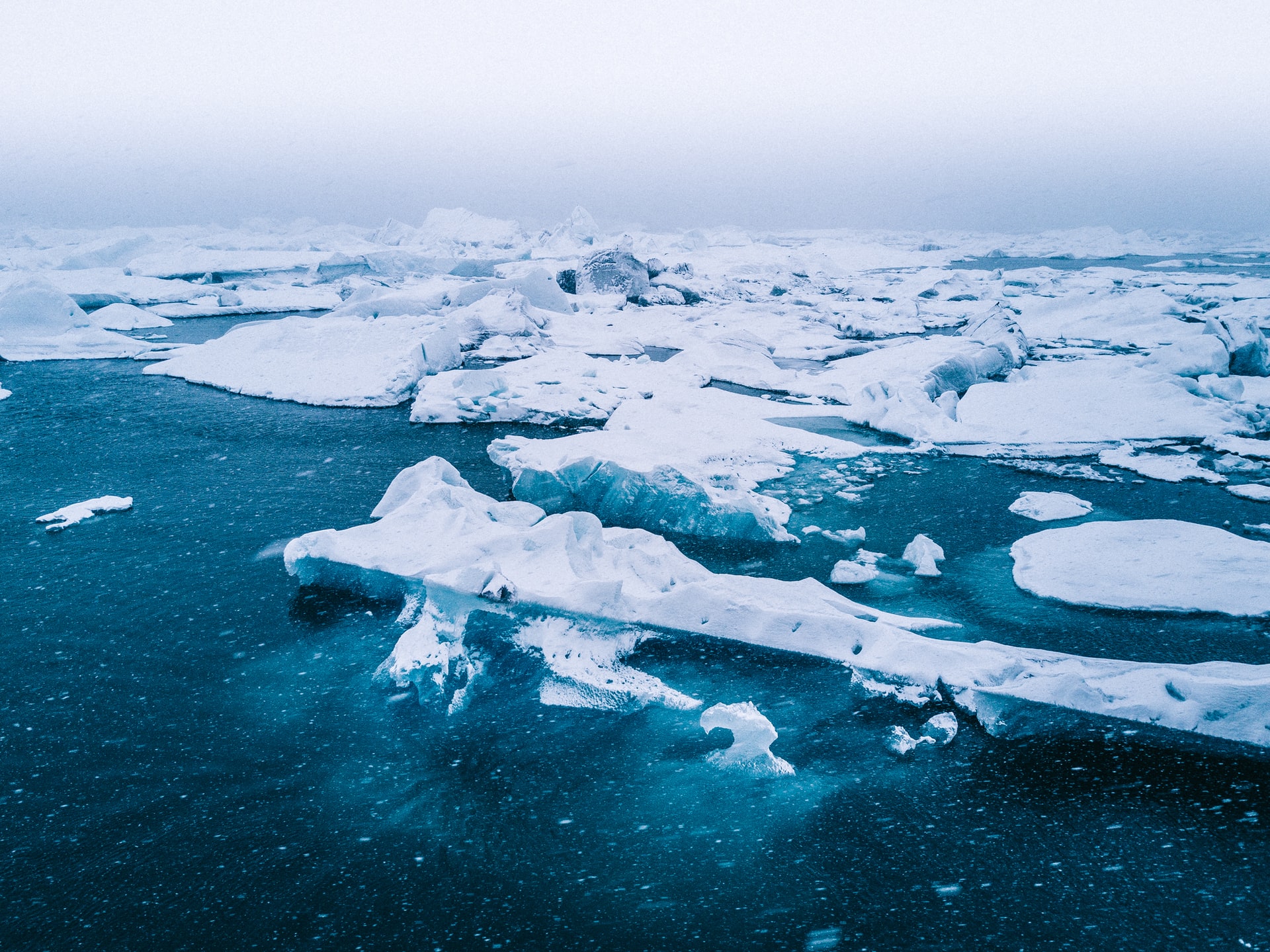Climate is one of the most important expenses the world’s leading economies face, costing hundreds of trillions of dollars. The Paris Protocol prescribes reducing carbon emissions by at least a quarter, but research by scientists proves that industrial gas emissions are not the biggest problem and the planet faces new cataclysms.
The fact is that global warming is affecting the Arctic more than anywhere else on the planet. Each year, the ice is retreating a little closer to the North Pole. Melting sea ice can release dangerous greenhouse gases like methane from the frozen Arctic ground. Sea ice used to cover Arctic coastal areas even in the summer, keeping temperatures from rising, explains Peter Wadhams, professor of ocean physics at Cambridge University. In the last decade, however, melting glaciers and rising water temperatures have thawed permafrost, one of the largest reservoirs of organic carbon in the world. As the permafrost melts, microbes quickly transform the thawed organic matter into methane, which is released into the atmosphere. According to Peter Wadhams, the release of even 8% of the gas, about 50 Gt, would raise global temperatures by 0.6 °C.
“Humanity is facing a very serious threat”, says the professor.
The Arctic region is warming twice as fast as other regions around the world, according to a Canadian government report. Climatologists warn that changes are already evident in many parts of the country and are projected to intensify. The Canadian Arctic is under the greatest influence of global warming and will continue to warm more than twice as fast as other regions, experts say.
Average annual temperatures in Canada have risen about 1.7 degrees Celsius since 1948, when climate observations first began. The biggest temperature increases are in the north, on the prairies, and in northern British Columbia. And the average annual temperature in northern Canada has increased by about 2.3 degrees Celsius. The report also notes that many of the climate processes that are now occurring are probably irreversible.
The effects of global warming on Canada’s ecosystems carry the threat of more extreme weather conditions. Higher temperatures could mean more heat and an increased risk of fires and drought in parts of the country. It is also fraught with risks for the ocean, which could become more acidic and less oxygenated, which could harm marine life.
Climate change in the Arctic can follow two scenarios, depending on how the situation with greenhouse gas emissions develops. If the anthropogenic influence on the atmosphere begins to decrease, the changes will be less obvious. Then, according to scientists’ estimates, areas of uninhabitable territories in Russian Siberia and Canada will be reduced by half. At the same time, the population density on them may increase fivefold.
If greenhouse gas emissions remain the same or increase, the climate and conditions will change much faster. As a result, up to a third of their territory will have a climate comfortable for human life.
In any case, climate change will make the northern regions of the planet suitable for growing several important crops. And first of all, Russia and Canada will become new centers of food production. In particular, Canada far north will be able to grow four crops – wheat, potatoes, corn, and soybeans.
The new areas could compensate for the loss of suitable land in the south. Also, agricultural development could stimulate the economy of the northern regions of Russia and Canada. Nevertheless, from an ecological point of view, the development of northern lands would have many unfavorable effects. In particular, replacing northern forests with farmland will contribute to additional greenhouse gas emissions and further warming. Biodiversity and water quality would also be harmed.
As a result, the cold regions of Eastern Siberia, Alaska, and the Canadian Arctic may be more attractive to people than the southern regions of the Earth. After all, heatwaves and severe droughts are expected there.
Some believe that this gives Canada a unique opportunity to welcome those who have been forced to leave their homes because of climate change-related conditions: climate resettlers. A 2010 federal government report entitled “Climate Change and Forced Migration: Canada’s Role” concluded that “best estimates suggest that hundreds of millions of people will migrate in the coming decades because of the effects of climate change. Canada now has the opportunity to plan an orderly and effective reaction to the coming crisis. But there is not yet a credible plan, and this is largely dependent on the 1951 UN Convention Relating to the Status of Refugees.
Much of this has to do with the fact that this Convention does not recognize climate threats as something from which one can escape.
“Climate factors themselves are not currently considered by the Convention to be grounds for refugee status,” said Adrian Edwards, the global representative of the United Nations High Commissioner for Refugees. “The Refugee Convention usually covers conflict: war and persecution.”
Climate refugees are likely to come to Canada from countries that have a history of migrating here, such as the Philippines, Bangladesh, India, and China – all of which are among the most vulnerable to climate change, poverty, demographic pressures, or geography that is particularly vulnerable to rising sea levels and extreme weather events.
Image credit: Willian Justen de Vasconcellos

